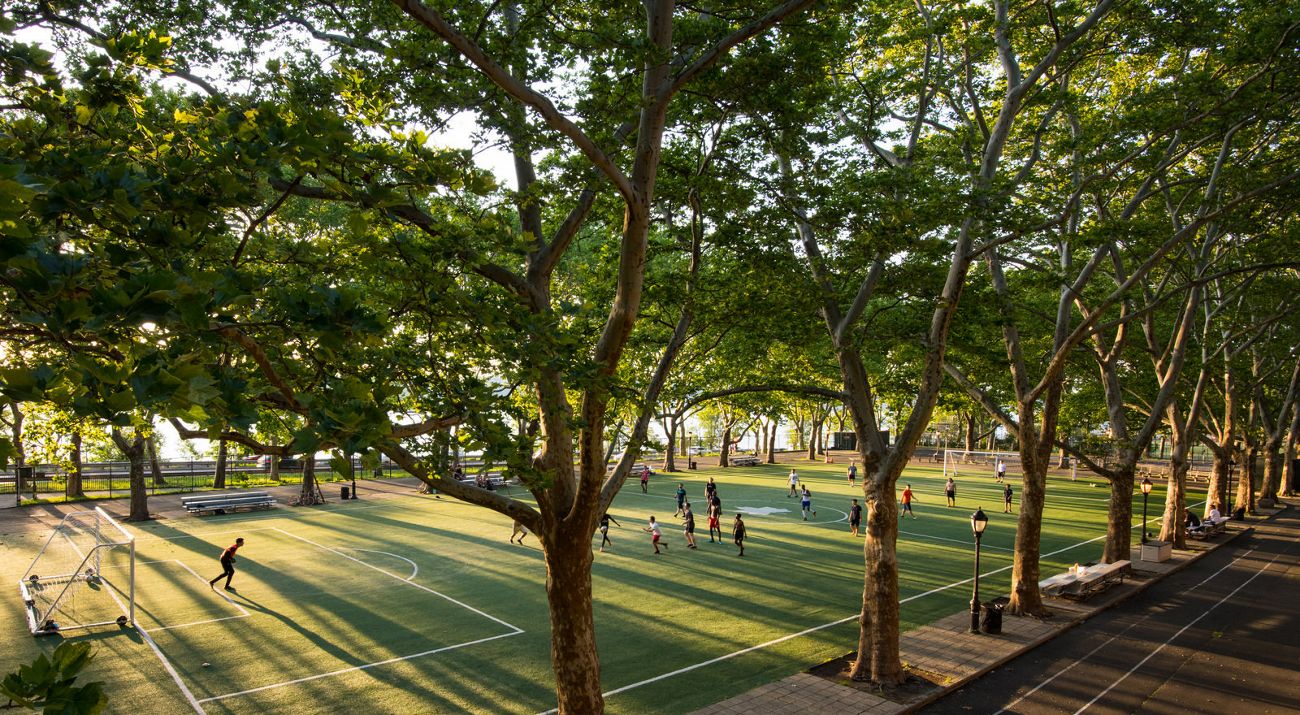Shining Fresh Light on the Health Benefits of Nature-Rich Cities
Biggest scientific review to date on health co-benefits of urban biodiversity confirms growing importance—and tradeoffs—of making space for nature.

Media Contacts
-
Tom Jennings
Email: tom.jennings@tnc.org
Assumptions are often made about the role nature can play in safeguarding the health of the estimated 70% of the global population expected to call cities home by 2050. However, debate has long occurred regarding the true extent to which biodiversity can be a force for good on our rapidly urbanizing planet.
Published in the interdisciplinary journal People and Nature, a comprehensive new review seeks to bring unprecedented clarity and context to the role of urban biodiversity in human health and well-being. Synthesizing findings from 1,550 previous papers, the study offers the fullest picture to date of the co-benefits available from hardwiring biodiversity into the heart of our cities.
These findings underline how biodiversity-supporting features like large municipal parks, private gardens and established trees are associated with a broad spectrum of physical and mental health benefits for city-dwellers—from increased opportunities for exercise to improved childhood development and reduced exposure to environmental harms like extreme heat and air pollution.
Associated nature-positive interventions like reducing pesticide usage and encouraging the proliferation of native plants were also found to be associated with more specific health outcomes—from lowering the odds of several types of cancer to reducing the incidence of childhood asthma.
Putting the review’s findings into context, lead author Erica Spotswood, director of science for Second Nature, commented: “Our review of pre-existing work on the links between urban biodiversity and human health—constituting what we believe to be the most comprehensive undertaking of its type to date—expands on existing research to summarize the health impacts available via biodiversity-focused urban greening projects and further underlines the business case for these types of interventions.”
The review also directly addresses a key weakness with much of the previous research linking health to nature contact: namely, how the observational design of most of these studies reveals little about the causal relationship between urban biodiversity and specific health conditions—revealing broad connections but not showing the extent to which nature played a pivotal role in those outcomes. By doing so, the study makes the case for greater focus on experimental and longer-term studies to bolster our understanding of how human health is affected by exposure to nature.
The significance of tradeoffs identified by previous studies forms another core element of this latest review—how, for example, health-benefiting interventions like maintaining sports fields and parkland trails can simultaneously imperil biodiversity by disrupting natural habitat and changing wildlife behavior. The reverse is also true, as some nature-positive strategies can jeopardize human health by increasing the risk of human-wildlife contact or exposure to allergens like pollen. Another important tradeoff is how the price premiums associated with “green gentrification” can marginalize poorer communities, making neighborhoods less affordable even as they become more nature-rich.
Elaborating on these nuances, senior co-author Rob McDonald, lead scientist for nature-based solutions at global nonprofit The Nature Conservancy, explained: “By exploring tradeoffs alongside benefits, our goal is not to call into question the entire business case for urban biodiversity as a human health play. We’re simply highlighting the opportunity for decision-makers to keep these balancing factors top of mind as they implement their greening strategies and to include steps that minimize the negative potential of these tradeoffs.”
Support for this project was provided by a grant from the Robert Wood Johnson Foundation, with co-authors drawn from San Francisco Estuary Institute (SFEI); Second Nature Ecology and Design; Google Nature & Biodiversity Program; Rutgers, the State University of New Jersey; University of California, Berkeley; Trust for Public Land; Agnes Scott College; University of Illinois at Urbana-Champaign; The Nature Conservancy; City University of New York (CUNY); Humboldt University; University of California, San Francisco; University of Utah; Biophilic Cities Network; and San Francisco Department of Public Health.
###
Spotswood E.N., Symonds J., Herman B., Grossinger R., Bazo M., Beller E., Aronson M., Dronova I., Frumkin H., Jennings V., Kuo M., McDonald R.I., Miller D., Rigolon A, Estien C.O., Brown J.D., Hachadoorian K., Galarraga J., Jennings T., Weinbaum K. Will biodiversity actions yield healthy places? A systematic review of health outcomes associated with biodiversity-focused urban greening. People and Nature.
10.1002/pan3.70130
The Nature Conservancy is a global conservation organization dedicated to conserving the lands and waters on which all life depends. Guided by science, we create innovative, on-the-ground solutions to our world’s toughest challenges so that nature and people can thrive together. We are tackling climate change, conserving lands, waters and oceans at an unprecedented scale, providing food and water sustainably and helping make cities more resilient. The Nature Conservancy is working to make a lasting difference around the world in 83 countries and territories (39 by direct conservation impact and 44 through partners) through a collaborative approach that engages local communities, governments, the private sector, and other partners. To learn more, visit nature.org or follow @nature_press on X.